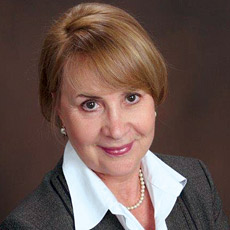
I recently attended the LTC 100 conference in beautiful White Sulphur Springs, WV. The conference is held every year to bring LTC providers and technology partners together. Although I have only attended two such conferences, the difference one year makes is astounding. The leap to use more technology in LTC is creating a different workplace.
Technology is also bringing significant care results to providers and it just keeps getting better. One keynote speaker, Bernard Harris, M.D., spoke on the evolution of telemedicine and its merits in the healthcare continuum, specifically in the skilled nursing facility sector. One technology partner in particular spoke about the use of robots at the bedside, bringing physicians through video technology to the patient and family. For nurses, the use of robotic video technology saves valuable time in rural care settings where resources may be scarce.
In my mind this is truly a new nursing resource, a new partner, one that requires special attention. It has to be regenerated each day, recharged through electricity to recharge its batteries. Its internal parts must be programmed with accuracy in order to perform complicated and complex tasks. A robot’s life is dependent on many sources of energy. It needs direction. It is programmed to deliver communication and collaboration that benefits the resident, the care providers and the families. I can see that the future of the workforce will be partnered with yet another technology source besides the electronic health record.
Robots have an extrinsic value to the provider because they act as an additional resource to the environment. But the intrinsic value to the nurse is undeniably invaluable. Providing a real-time video presentation of the resident’s problem to the physician saves time and all too often is of the essence in healthcare. For the nurse it provides reassurance that the resident will receive treatment as needed without endless follow up phone calls. A treatment protocol can begin sooner than later.
As I drove home from the conference I was listening to yet another conversation about robots in the manufacturing setting. The scientist on the call was explaining how robots can stock and lift goods while calculating inventory in huge warehouses. These robots help companies prevent back injuries otherwise sustained by employees. As the radio program came to a close the moderator asked the question “what about using robots in healthcare, instead of nurses?” The speaker then reminded the moderator “nothing can replace the nurse.” People need a hand to hold. Human touch is still the most important aspect of care. Robots do not have the gift of anticipation either. The nurse is the eyes, the ears and the voice of the resident and can anticipate a change in condition. The nurse senses progress and deterioration of a resident. The nurse relies on technology to support their intuition but the human touch remains supreme.
But robots are part of our ecosystem now, contributing to the health and well-being of people in many settings. This technology will certainly revolutionize care and how we treat and manage disease and illnesses. Robots are also part of the workforce. In addition to people they can be a valuable asset. They are also proving to be a valuable addition reducing the strain of hiring as well.
It’s quite possible that as technology advances and is used in adjunct with human beings we will only then begin to truly value the workforce because technology was never meant to replace people. It was designed to help us, be a partner, to make us more productive – not to replace. If we align our workforce with technology we can be more competitive, more productive, and our residents will have the care they need.
Making the workforce agile, flexible, and most of all a valuable asset can be just as simple as providing technology that supports them at the bedside. Adequate staffing and assessing the workload requirements requires technology. Nurses are not like robots, flipped on, ready to work. They require a healthy work environment, one that gives them a voice and engages them in the process of scheduling and staffing. They will be productive and happy if they are valued. Give them a robot but don’t forget to thank them for caring!
Gaylyn Timiney is the senior clinical operations consultant at Kronos.




